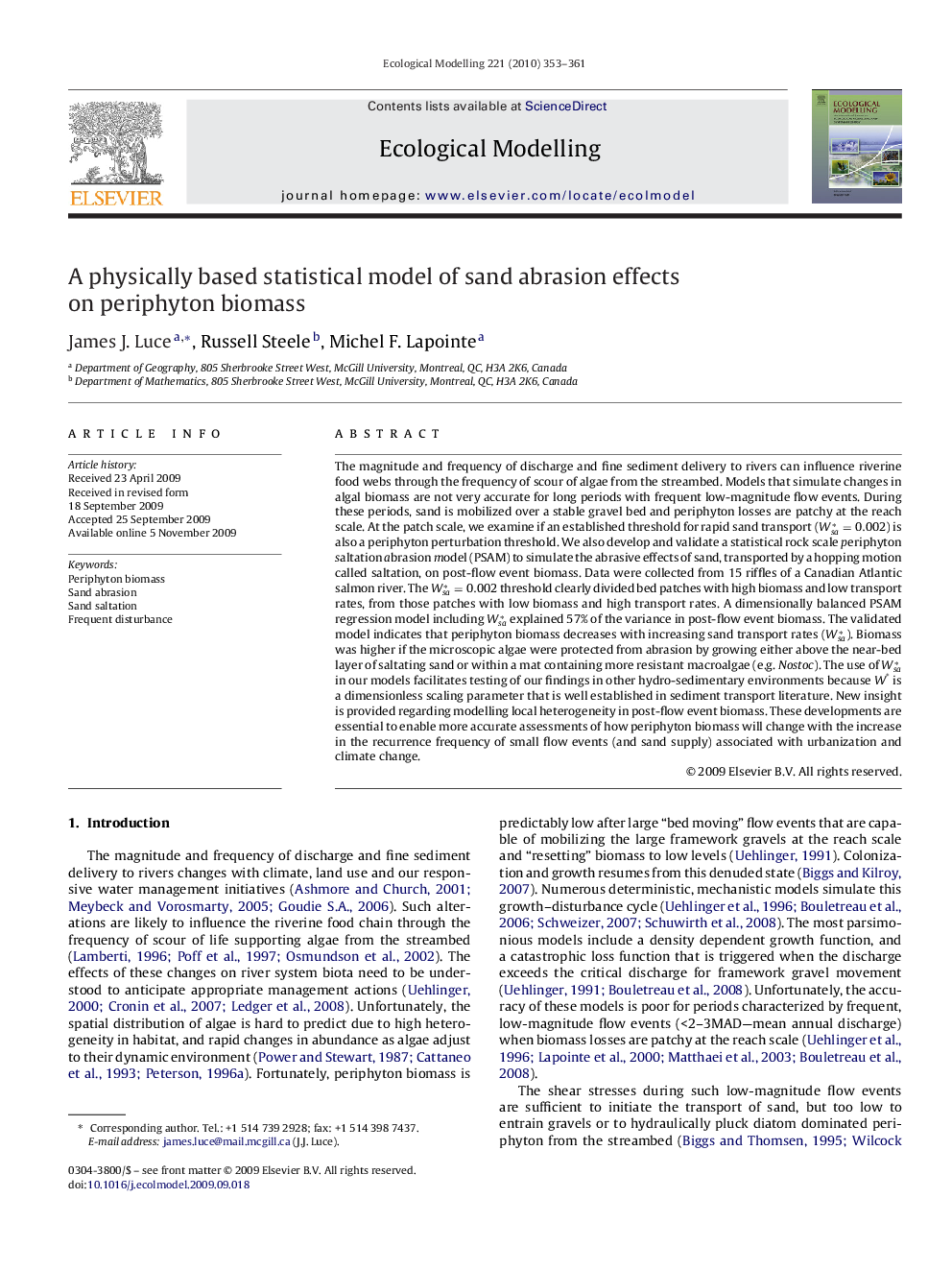| Article ID | Journal | Published Year | Pages | File Type |
|---|---|---|---|---|
| 4377497 | Ecological Modelling | 2010 | 9 Pages |
The magnitude and frequency of discharge and fine sediment delivery to rivers can influence riverine food webs through the frequency of scour of algae from the streambed. Models that simulate changes in algal biomass are not very accurate for long periods with frequent low-magnitude flow events. During these periods, sand is mobilized over a stable gravel bed and periphyton losses are patchy at the reach scale. At the patch scale, we examine if an established threshold for rapid sand transport (Wsa*=0.002) is also a periphyton perturbation threshold. We also develop and validate a statistical rock scale periphyton saltation abrasion m odel (PSAM) to simulate the abrasive effects of sand, transported by a hopping motion called saltation, on post-flow event biomass. Data were collected from 15 riffles of a Canadian Atlantic salmon river. The Wsa*=0.002 threshold clearly divided bed patches with high biomass and low transport rates, from those patches with low biomass and high transport rates. A dimensionally balanced PSAM regression model including Wsa* explained 57% of the variance in post-flow event biomass. The validated model indicates that periphyton biomass decreases with increasing sand transport rates (Wsa*). Biomass was higher if the microscopic algae were protected from abrasion by growing either above the near-bed layer of saltating sand or within a mat containing more resistant macroalgae (e.g. Nostoc ). The use of Wsa* in our models facilitates testing of our findings in other hydro-sedimentary environments because W* is a dimensionless scaling parameter that is well established in sediment transport literature. New insight is provided regarding modelling local heterogeneity in post-flow event biomass. These developments are essential to enable more accurate assessments of how periphyton biomass will change with the increase in the recurrence frequency of small flow events (and sand supply) associated with urbanization and climate change.
